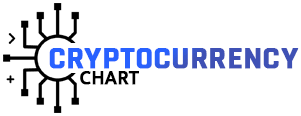Blockchain
A blockchain is nothing but a technological ledger that records transactions, tracking assets, and where immutability exists in a network that takes place between the colleagues and any third party cannot access or control it.
Assets can further be classified as:
- Tangible assets: such as homes or cash or the things which can be seen and touched
- Intangible assets: such as patents or copyrights or any other intangible things which can’t be touched but only felt.
A blockchain comprises the records in an order which further gets organized in the block structure.
Each block of the structural data comprises a hash, timestamped batches of their contemporary transactions and a has from the last block.
With the help of this design, each block gets connected with each other in a sequential fashion and all the connected blocks are then called a blockchain.
It becomes rationally impractical to make modifications and changes in any of the blocks somewhere in the middle of the chain.
If a block needs a modification then all the blocks need to undergo a sequence of modifications and they must get modified within the same span of time.
By following this system, the data on the blockchain network gets rigid.
Smart Contract
A smart contract refers to the set of computer protocol that functions and operates automatically.
This automated functionality only occurs when all the conditions are met and it can count as the autonomous wing from the authenticated blockchain technology.
The smart contract was assimilated as the crucial function of blockchain 2.0.
Further extending the horizons of blockchain technology even beyond the bounds of cryptocurrency such as bitcoin of blockchain 1.0
The blockchain 3.0 has emerged just a while ago. Though the basic idea of the overall concept is still not clear and the experts are still in dilemma.
Some are in the virtue that blockchain 3.0 is going to make a remarkable revolution in the overall blockchain technology which appears as the most crucial challenge of blockchain technology.
Healthcare industry and Blockchain
Several conditions of blockchain technology such as the inflexibility of the data when stored in the whole blockchain are gaining major attention of the healthcare sector.
The blooming future anticipation of healthcare with the implementation of blockchain has already started curiosity and excitement in the minds of healthcare professionals and technical experts.
The blockchain technology is predicted to provide better record management and the smooth functioning of the overall insurance claim, promote biomedical and clinical research while advancing healthcare data and biomedical ledger.
These predictions were made looking at the main outlook of blockchain technology such as decentralized authority and accountability in the company, Audit trail, sources of data, vigorousness, and improvised security and privacy.
All the possibilities of blockchain in healthcare have been elaborated in the article though the major thing which can be done with blockchain technology is the retrieval of data.
Medical data must be controlled, operated, and authorized to make use of data subjects that supplement the hospitals.
This is the main theory of patient-centralized interactivity which makes it different from a standard institution driven interactions.
There are numerous questions that emerge from patient-centered interfaces such as data standardization, security, and privacy besides issues related to technology such as speed, scalability, incentives, and the rules and guidelines governing it.
The blockchain technology can potentially smoothen the speed of transition from institution-driven interaction to patient-centered interaction.
Blockchain technology provides patients a grant approach to rules and guidelines for their provided medical data and granting researchers and experts to provide a gateway of the existing data for a particular period of time.
Even patients can collect their medical data directly from other hospitals with the help of this blockchain technology.
Such functions of data sharing must be met with the guidelines and rules which are issued by various govt in terms of using this blockchain technology.
The rules and regulations issued by the govt need to be followed strictly as the medical data is too sensitive and any harm to the data may result in huge loss for any patient.
Though some experts of blockchain technology are of the virtue that the information of medical data and not the overall data at large will get store in data blocks.
Some crucial information such as drug allergies, skin allergies, and important health issues pertaining to the patient might get published in the public blockchain domain.
Blockchain technology is rapidly and drastically making improvements rather than completely developed technology.
The several latent hindrances that need to get communicated for the technology to keep on adopting the changes in biomedical and healthcare applications.
The major and biggest threat to this technology is transparency and maintaining the secrecy of medical data of various patients.
Anything can get visible in the blockchain network of technology.
While others believe that the medical data gets stored in the off-chain and the hash of the information which gets tagged gets stored in the blockchain.
The second major challenge revolves around speed and expandability. In research, it was been discovered that the speed of processing a transaction can be only in hundredths the same as the processing of credit card transactions.
By assuming that the number of all the transactions in the healthcare sector are numerous, the revolution in the blockchain technology is the need of an hour.
The third major challenge is nothing but an attack of threat that counts around 51%. Though it is a theoretical risk and the clear solution of it from counting the weightage of theoretical risks must be suggested for its practical implementation.
Conclusion
Many experts do believe that the blockchain technology can call for medical changes and even beyond the medical aspects of data.
Though there are significant changes taking place in the blockchain technology still the worth of technology is still not proven to support the statement.
All we need for now is not the predictions or assumptions of this technology but the practical solution and evidence of this blockchain technology which clearly defines the actual potential of this technology.
About the Author:
Parth Patel is a serial entrepreneur and CEO of SyS Creations which is a top healthcare app development company. Operating the IT Infrastructure of SMEs and startups keeps him on his toes and his passion for helping others keeps him motivated

